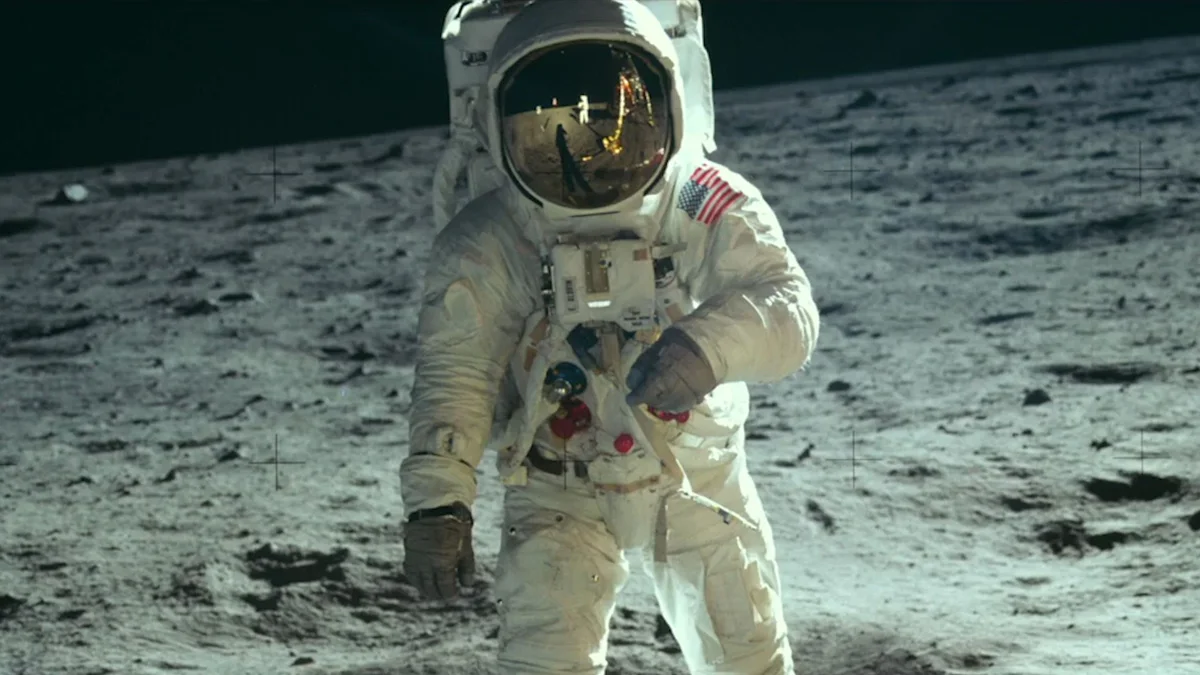
How Apollo 11 inspired us (personally and technologically)
Saturday, July 20, 2019, marks the 50th anniversary of the Apollo 11 moonwalk
Half a century ago, Buzz Aldrin and Neil Armstrong became the first humans to walk on the surface of another planetary body in our solar system.
Launching into space on July 16, 1969, Aldrin, Armstrong and Michael Collins took more than three days to travel from Earth to the Moon, with Aldrin and Armstrong setting down on the surface, to step out and walk on the Moon at 10:51 p.m. ET, on July 20, 1969.
The landing and subsequent moonwalk, watched by millions of people around the world, inspired many. Talk to any astronaut these days, and it is likely they went into space as a direct result of watching the Apollo 11 landing.
Follow along with the mission, in real time 50 years from the date, at Apollo 11 in Real Time.
Retired Canadian astronauts Dr Roberta Bondar, Marc Garneau, Julie Payette and Chris Hadfield all directly attribute their becoming astronauts to the Apollo 11 mission.
After seeing Aldrin and Armstrong walking on the Moon, Bill Nye went on to become an engineer, helped design Mars rovers for NASA, taught millions of children about the wonders of science and space via his television show, and he's now the head of the largest space advocacy group in the world, The Planetary Society.
We at the Weather Network were similarly inspired.
As a science writer and the Weather Network's resident expert on space and space exploration, the Apollo Moon landings had a strong influence on me. I wasn't yet born when Armstrong and Aldrin first walked on the Moon, but even learning about it years later, I wanted all the books on the subject, and the toys (remember the old Space LEGO sets?), and I was always glued to the television whenever there was a documentary (or just the Space 1999 science fiction show). The knowledge that humans had actually set foot on the Moon drove my continued obsession with science and science fiction, and played a role in getting me to where I am today.
Watch as Chris St. Clair tell us about how he spent his week, during the Apollo 11 mission!
TECHNOLOGICAL INSPIRATIONS
Even as the Apollo mission inspired people - to become astronauts, to study science and space, or simply to strive towards bigger goals in their lives - it also inspired the development of new technologies that are still in use today.
We're not talking about Tang and Velcro here. While those are widely attributed to NASA and the space program, both were actually invented long before, and were only used during the Apollo missions.
Freeze-dried food
NASA needed a way to ensure that the food the Apollo astronauts brought with them wouldn't spoil on the trip to the Moon and back. To this end, they turned to freeze-drying, a process that had been used on biological samples, blood and medicine but had not been used for food.
This also led to the creation of the HACCP (Hazard Analysis Critical Control Point) system, which greatly increased food safety, as the entire process of food production was controlled from beginning to end, reducing the risk of bacterial contamination.
Space blankets
Those distinctive silvery blankets, that are an integral part of even the most basic emergency kit? They were produced from Apollo technologies.
As NASA says: "NASA found that by layering multiple metalized sheets of lightweight mylar, it could create a reflective insulation far more effective both pound-for-pound and inch-for-inch than anything else available. NASA went on to master the technology, improving its strength, fabrication techniques and testing procedures, fine-tuning it for maximum performance."
Quake-proof buildings
A spinoff from the launch of Apollo 11, NASA had to find a way to manage the arms of the launch tower - the massive ones that are seen to swing away from the rocket in the iconic footage of the Saturn V booster launching towards space.

Credit: NASA
These arms required some major shock management, and the technologies developed to do that have now been used for years in buildings, bridges and other structures, to stabilize them during earthquakes.
Digital flight controls
Prior to the Apollo missions, control systems for aircraft involved cables that diretly connected the pilots controls (steering column and foot pedals) to the appropriate aircraft control system (the wing flaps and tail flap).
To improve accuracy and safety, NASA had a new system of digital controls developed, one where electronic signals were transferred between the controls and the control systems by wires. This earned the system the nickname "fly by wire".
According to NASA: "The Apollo Primary Guidance, Navigation and Control System converted pilots' inputs into electrical signals and fed them to the Apollo Guidance Computer, along with information from various sensors. The computer then decided how to adjust control firings to achieve the desired outcome. Being digital, rather than analog, the computer could make use of complex software and store large amounts of data."
The Apollo Guidance Computer was one of the first computers to use the integrated circuit, which is still in use today, in our home computers and mobile devices, in aircraft, and even in the cars and trucks that we drive around every day.
Others
Cordless tools
Dialysis machines
Firefighting equipment
Flame-resistant cloth
Scratch-resistant lenses
Wireless headsets
All of these things were derived from technologies produced for the Apollo mission!
Want to learn more? Check out NASA's Technology Transfer Program, aka NASA Spinoff.
Sources: NASA | NASA Spinoff











